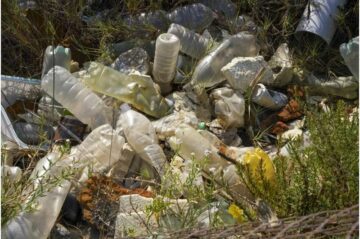From Phys.Org:
 We breathe, eat and drink tiny particles of plastic. But are these minuscule specks in the body harmless, dangerous or somewhere in between?
We breathe, eat and drink tiny particles of plastic. But are these minuscule specks in the body harmless, dangerous or somewhere in between?
A small study published Wednesday in the New England Journal of Medicine raises more questions than it answers about how these bits—microplastics and the smaller nanoplastics—might affect the heart. The Italian study has weaknesses, but is likely to draw attention to the debate over the problem of plastic pollution. Most plastic waste is never recycled and breaks down into these particles. “The study is intriguing. However, there are really substantial limitations,” said Dr. Steve Nissen, a heart expert at the Cleveland Clinic. “It’s a wake-up call that perhaps we need to take the problem of microplastics more seriously. As a cause for heart disease? Not proven. As a potential cause? Yes, maybe.” WHAT DID THE STUDY FIND?
The study involved 257 people who had surgery to clear blocked blood vessels in their necks. Italian researchers analyzed the fatty buildup that the surgeons removed from the carotid arteries, which supply blood and oxygen to the brain. Using two methods, they found evidence of plastics—mostly invisible nanoplastics—in the artery plaque of 150 patients and no evidence of plastics in 107 patients. They followed these people for three years. During that time, 30 or 20% of those with plastics had a heart attack, stroke or died from any cause, compared to eight or about 8% of those with no evidence of plastics.
More here.
